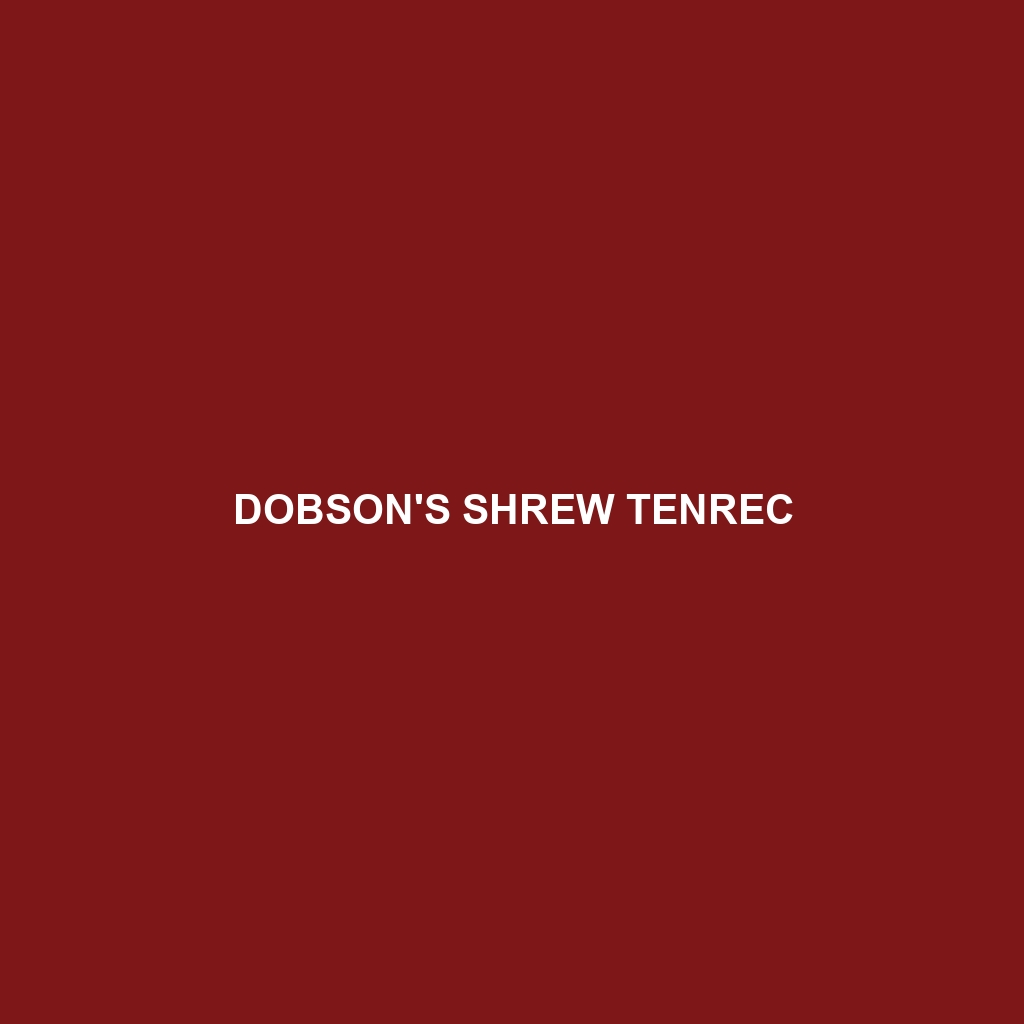Talazac’s Shrew Tenrec: A Comprehensive Overview
The Talazac’s Shrew Tenrec (Microgale talazaci) is a small, insectivorous mammal native to the lush rainforests of Madagascar. This elusive creature is part of the Tenrecidae family and is known for its shrew-like appearance and exceptional adaptability. Despite its small size, the Talazac’s Shrew Tenrec plays a significant role in its ecosystem, contributing to pest control and soil aeration.
Physical Characteristics
Size and Weight:
Length: Typically ranges from 10 to 15 cm (4 to 6 inches), excluding the tail.
Weight: Averages between 20 to 40 grams (0.7 to 1.4 ounces).
Coloration:
Fur: The fur is dense and usually a dark brown or grayish-brown, providing excellent camouflage against the forest floor.
Underbelly: Lighter in color, often a soft gray or cream.
Special Features:
Snout: Long and pointed, well-adapted for probing into the soil and leaf litter for insects.
Ears: Small and rounded, with excellent hearing capabilities to detect prey.
Tail: Moderately long, covered in short hair, and used for balance and signaling.
Behaviors
Social Interactions:
Generally solitary, except during mating season.
Communicates through a series of high-pitched squeaks and chirps.
Feeding Habits:
Diet: Primarily insectivorous, feeding on insects, spiders, and other small invertebrates.
Foraging: Uses its keen sense of smell and hearing to locate prey, often digging through leaf litter and soil.
Ecological Roles:
Pest Control: Helps in controlling insect populations.
Soil Aeration: Their digging behavior promotes soil health and nutrient cycling.
Habitats and Adaptations
Natural Habitat:
Prefers dense, humid rainforests in Madagascar.
Often found in areas with abundant leaf litter and undergrowth.
Adaptations:
Camouflage: Fur coloration blends seamlessly with the forest floor, protecting it from predators.
Sensory Adaptations: Enhanced sense of smell and hearing to locate prey in the dark and dense environments.
Nocturnal Lifestyle: Active primarily at night to avoid daytime predators and to capitalize on nocturnal insect activity.
Conservation Status
Currently listed as “Least Concern” by the IUCN Red List, but habitat destruction and deforestation pose potential threats.
Conservation efforts focus on habitat preservation and reducing human encroachment.
Fun Facts
The Talazac’s Shrew Tenrec is named after the French naturalist, Talazac, who was instrumental in documenting Madagascar’s unique faunal diversity.
Unlike true shrews, tenrecs have a lower metabolic rate, allowing them to survive in varied environmental conditions.
These animals are part of the ancient lineage that connects them to some of the earliest known mammals, offering valuable insights into evolutionary biology.
Conclusion
The Talazac’s Shrew Tenrec is a fascinating component of Madagascar’s rich biodiversity. Its unique physical and behavioral adaptations make it a key player in its ecosystem. By understanding and protecting this remarkable species, we contribute to the broader effort of conserving Madagascar’s unique wildlife heritage.
